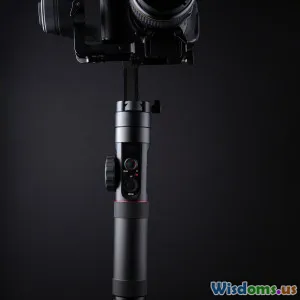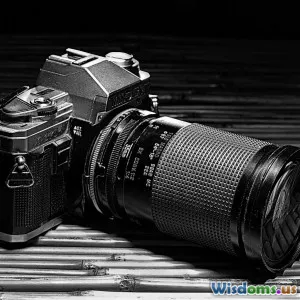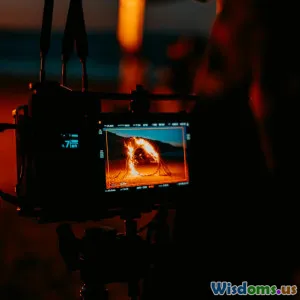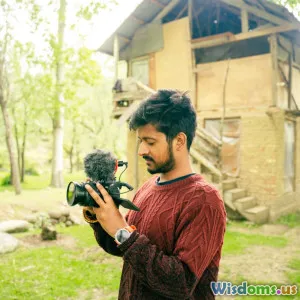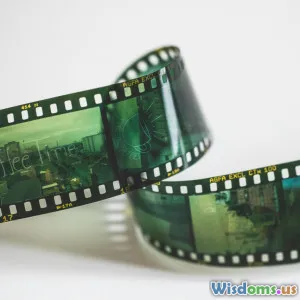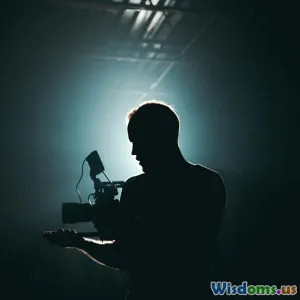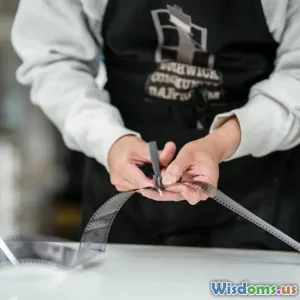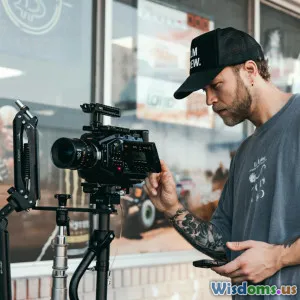
The Impact of Lighting in Film
8 min read Discover how lighting shapes film storytelling, mood, and viewer perception, unlocking the art behind cinematic brilliance. (0 Reviews)
The Impact of Lighting in Film
Light is more than just illumination in filmmaking — it’s a powerful storytelling tool that directors, cinematographers, and lighting designers wield to influence viewers’ emotions, define characters, and create immersive atmospheres. Yet, it often goes unnoticed by audiences who simply soak in the final imagery on screen. This article illuminates the pivotal role lighting plays in film, demystifies its technical and artistic components, and reveals how subtle changes can transform narratives.
Why Lighting Matters: The Foundation of Visual Storytelling
Cinema is a visual medium. While dialogue and plot engage the mind, the mood, tone, and emotional depth hinge heavily on how scenes are lit. Lighting guides the audience’s gaze, accentuates specific details, and evokes subconscious reactions. As famed DP Roger Deakins says, “Lighting and cinematography, those are my favorite things. If I can light a scene naturally and creatively, it’s magic.”
From the stark high-contrast shadows of film noir to the warm, soft glow in romantic dramas, lighting influences genre, style, and story pacing. Consider the 1940 classic The Maltese Falcon, where chiaroscuro lighting underlines tension and deception. Or Blade Runner (1982), where neon and smoke-penetrated shafts of light evoke a dystopian existential gloom.
The Core Elements of Film Lighting
1. Quality of Light: Hard vs. Soft
Hard light is direct and creates sharp shadows, heightening drama or unease. It’s frequently used in thrillers or horror to accentuate stark contrasts and textures. Conversely, soft light diffuses across surfaces gently, flattening features and evoking warmth or romanticism. Portrait lighting often leans on soft light to flatter faces.
Example:
In Silence of the Lambs (1991), Jonathan Demme used hard lighting on Hannibal Lecter’s face during intense close-ups to amplify his menace, producing eerie shadows along his features.
2. Direction of Light
Where light falls alters perception immensely. Lighting from below produces unnatural, sinister vibes (often called “Halloween lighting”), while overhead light can simulate natural sunlight or institutional settings.
Side lighting sculpts and defines faces, adding depth and sometimes moral ambiguity by lighting one side and shadowing the other.
3. Color Temperature and Color Gels
Lighting color affects mood beyond simple illumination. Warm colors (yellows, reds) suggest comfort, passion, or nostalgia. Cool hues (blues, greens) transmit coldness, isolation, or futurism. Using colored gels or post-production color grading, filmmakers orchestrate psychological responses.
Case Study:
In Her (2013), director Spike Jonze employed a predominantly warm pastel palette supported by soft lighting to complement themes of intimacy and loneliness in a technologically saturated future.
4. Intensity and Exposure
Adjusting light intensity can evoke shifts in mood and time. Dimming lights or using naturalistic exposure recreates twilight or dim interior spaces, fostering intimacy. Overexposure or harsh light suggests harsh realities or emotional discomfort.
5. Practical Lights and Motivated Lighting
Practical lights are visible sources in scenes (like lamps or neon signs), which both illuminate and enrich the mise-en-scène. Motivated lighting means light has a narrative source or reason on set, increasing believability.
In the psychological thriller Don’t Look Now (1973), the flickering red lights in Venice’s canals heighten suspense and surrealism.
Lighting Techniques That Shape Film Genres
- Film Noir: Prefers high-contrast lighting with heavy shadow use, unusual angles, and venetian blind patterns to strengthen mystery and cynicism.
- Horror: Exploits low-key lighting and unnatural angles to disorient viewers and build tension.
- Romantic/Drama: Uses soft light and warm colors to evoke empathy and tenderness.
- Sci-Fi: Leans on colored gels and strange lighting patterns to suggest otherworldliness or technological themes.
The Technological Evolution of Film Lighting
Lighting design has evolved from bulky tungsten lamps with limited control to advanced LED panels offering sophisticated dimming, color mixing, and wireless control. This evolution allows filmmakers unprecedented creative freedom and enhances on-location flexibility.
For instance, the filming of Christopher Nolan’s The Dark Knight (2008) utilized cutting-edge LED arrays to create intense, atmospheric scenes with precision.
Lighting’s Psychological Impact: How Viewers Perceive Story Through Light
Psychological studies underline that lighting influences emotional response subconsciously. Bright, balanced lighting signals safety and clarity, whereas dim, shadowy environments trigger alertness or fear.
A classic example is Spielberg’s Jaws (1975), where underwater scenes lit with eerie blue-green light elevate suspense and dread—demonstrating how naturalistic lighting choices can manipulate audience emotions memorably.
Emerging Trends: Lighting in the Age of Digital Filmmaking
Digital sensors have higher ISO capabilities, enabling lower-light shooting. This expands creative potentials around minimal light use, leading to more naturalistic aesthetics—visible in film like Moonlight (2016).
Additionally, virtual production methods (e.g., LED volume stages employed in The Mandalorian) blend physical and digital lighting, creating seamless immersive environments during shooting.
Conclusion: Lighting as the Invisible Star of Cinema
While screenplay, acting, and directing are readily celebrated in film, lighting remains a quiet architect of storytelling. Through manipulating quality, direction, color, and intensity, lighting teams fabricate the emotional fabric and realism viewers empathize with. Studying and mastering lighting principles empowers filmmakers to transform simple scenes into unforgettable cinematic moments.
For aspiring filmmakers and enthusiasts, begin by observing everyday light — how shadows fall, how colors shift at different times — and experiment with replicating these effects in your videos. Understanding lighting is not simply technical; it is embracing cinema’s language of mood, meaning, and magic.
“What counts is how the audience feels. Lighting is a subtle art that nudges those feelings.” — Rachel Morrison, Oscar-nominated cinematographer
References
- Deakins, Roger. Roger Deakins: Notes on Cinematography. Faber & Faber, 2018.
- Brown, Blain. Cinematography: Theory and Practice. Focal Press, 2016.
- Bordwell, David, and Kristin Thompson. Film Art: An Introduction. McGraw-Hill, 2016.
- Interview with Rachel Morrison, ASC, in American Cinematographer, 2019.
Rate the Post
User Reviews
Popular Posts










